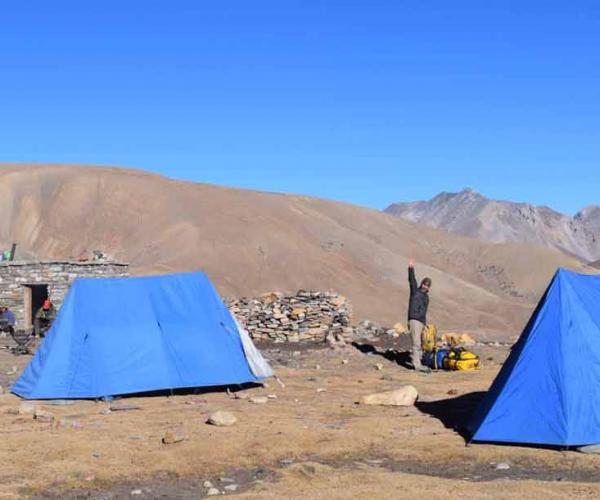What You Should Know About Upper Dolpo Trek
Upper Dolpo Trek is a challenging and remote trek in the western region of Nepal that takes trekkers through remote villages, high passes, and breathtaking landscapes. Before embarking on this adventure, you should know the following:
- Trekking Permits: The Nepalese government requires a special permit for trekking in Upper Dolpo. This permit can be obtained only through a registered trekking agency.
- The weather: Upper Dolpo’s weather can be unpredictable, with sudden changes in temperature and snowfall. Be prepared for all types of weather and pack accordingly.
- Guides and porters: Hiring a guide and porter is recommended for this trek. Not only will they help you navigate difficult terrain, but they will also be able to help you in an emergency.
- Accommodation: There are few tea houses along the Dolpo trekking route, and most of the trek is camping in remote areas. It’s essential to carry camping equipment and good quality sleeping bag.
- Season: Upper Dolpo best treks from June to September when the weather is clear and dry. The tr ek can be attempted outside of this time frame, but the trail might be difficult and dangerous due to snow and landslide.
All in all, the Dolpo Jomsom Trek is a once-in-a-lifetime experience that allows trekkers to explore remote and rugged landscapes while also gaining insight into the unique culture of the Dolpo people. It’s important to be prepared and to have the right mindset and physical condition to undertake such a challenge. However, the Upper Dolpo trek can be an unforgettable journey with the right preparation.
Some FAQs On Upper Dolpo Trek
What is the difficulty level of Upper Dolpo Trek?
Trek to Upper Dolpo is more challenging and demanding. Normal trek hours for Upper Dolpo trek takes 4 to 9 hours each day and crossing over several of 5000 meters high passes. Thus, an excellent physical condition, patients and mountain experience is required in order to complete Upper Dolpo trek.
What is the length of the Upper Dolpo Trek?
Upper Dolpo Treks typically take 20-40 days to complete, depending on the route and itinerary.
When to trek to Upper Dolpo?
Spring Season: MAR – APRIL – MAY
Trekking in the spring season is ideal anywhere in the world. Flora and Fauna, whatever creature in the universe is dormant all winter, spring back to life, feeding, and breeding in the warm temps. But in places like Upper Dolpo trekking in this season makes difficult due to snows over the pass if there is heavy snowfall during winter. Trekking in the Upper Dolpo region during monsoon depends upon how much snow falls during winter. If there is heavy snowfall during winter, you may face getting into upper Dolpo crossing the high pass which may lead to diverting your Dolpo trek itineraries.
Monsoon season: JUN – JUL – AUG
Trekking during the monsoon season is not ideal. But Nepal is known as the country trekkers’ paradise where intrepid travelers can do trekking in the summer season. Moreover, the western part of Nepal, such as Upper Mustang, Upper Dolpo, and many other western frontiers are located in the rain-shadow areas, where only minimal rainfall even in monsoon. During this time, the high passes are snow-free, green and blanketed by alpine flora and the landscapes are verdant. But, there is a high possibility of flight cancellation getting into Phallus due to the cloudy weather and heavy rainfall.
Fall: SEP – OCT -NOV
Perhaps autumn is the best period for trekking in Nepal, especially crowded in Annapurna, Lang tang, and Everest region. After the summer monsoons, the clear and blue skies offering many wonderful scenic views sparkling nature and massif Himalayas. Additionally, the fall harvest times are also great opportunity for you to mingle with the locals, many beautiful villages, and communities during Upper Dolpo trek.
Get to know more about
Dolpo Trekking | Limi Valley Trek | Lower Dolpo Trek
Contact Details
Business Name: Himalayan Companion Treks and Expedition
Contact Person: Jag Bahadur Budha
Country/Region: Kathmandu, Nepal
Street Address: Samakhusi
City: Kathmandu
State: Bagmati
Postal Code:+97701
Email Address: jag@himalayancompanion.com, enquiry@himalayancompanion.com
Web. https://www.himalayancompanion.com/
Phone No:+977-9851133894



